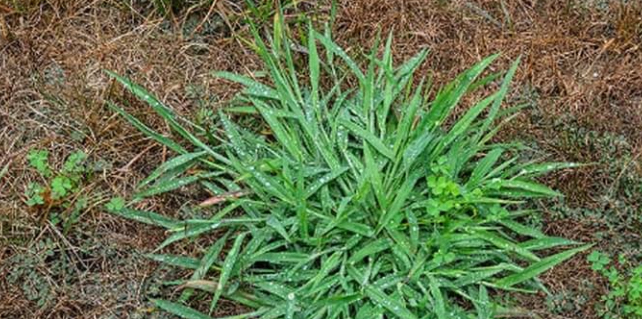Crabgrass is often viewed as a pesky weed that invades lawns and gardens, but recent studies and traditional practices have revealed that this resilient plant offers numerous benefits. From its nutritional value to its environmental advantages, crabgrass is more than just an unwanted guest in your yard. Here’s how crabgrass can be beneficial and why it might deserve a second look.
Nutritional Value
- Rich in Nutrients
Crabgrass seeds are a valuable source of nutrients. They are rich in proteins, vitamins, and minerals, making them a nutritious addition to diets in some cultures.
Proteins: Essential for muscle repair and growth.
Vitamins: Such as vitamin E, which is important for skin health and immune function.
Minerals: Including magnesium, calcium, and potassium, crucial for various bodily functions.
- Edible Leaves and Seeds
In some parts of the world, the leaves and seeds of crabgrass are consumed. The young leaves can be used in salads or cooked as a leafy green, while the seeds can be ground into flour for baking.
Environmental Benefits
- Erosion Control
Crabgrass has a robust root system that helps to stabilize soil and prevent erosion. Its ability to grow quickly and cover the ground makes it an effective plant for controlling soil erosion on slopes and disturbed lands. - Drought Tolerance
Crabgrass is highly drought-tolerant and can thrive in conditions where other grasses may fail. This makes it a valuable plant for maintaining green cover and preventing soil degradation in arid and semi-arid regions.
Agricultural Benefits
- Forage for Livestock
Crabgrass is a nutritious forage option for livestock. It provides a good source of fodder during the summer months when other forages might be scarce.
Digestibility: High digestibility, making it a good food source for cattle, goats, and sheep.
Palatability: Livestock generally find crabgrass palatable, ensuring they consume it readily.
- Cover Crop
As a cover crop, crabgrass can help improve soil fertility by enhancing organic matter content and promoting microbial activity. Its quick growth also helps suppress other weeds, reducing the need for herbicides.
Medicinal Uses
Traditional Medicine
In various traditional medicine systems, crabgrass has been used for its healing properties. The plant is believed to have diuretic and anti-inflammatory effects.
Diuretic: Can help in flushing out toxins from the body by increasing urine production.
Anti-inflammatory: Used to reduce inflammation and pain in conditions like arthritis.
Practical Tips for Managing Crabgrass
While crabgrass has many benefits, it can still be invasive and challenging to manage in lawns and gardens where a uniform appearance is desired. Here are some practical tips for managing crabgrass:
- Cultural Control
Mowing: Regular mowing at the appropriate height can help prevent crabgrass from setting seeds.
Watering: Deep and infrequent watering encourages the growth of deeper-rooted grasses over crabgrass. - Mechanical Control
Hand Pulling: For small infestations, hand pulling can be effective, especially when the soil is moist.
Tilling: Tilling the soil can help remove young crabgrass plants before they establish. - Chemical Control
Pre-emergent Herbicides: Applying pre-emergent herbicides in the spring can help prevent crabgrass seeds from germinating.
Post-emergent Herbicides: Use post-emergent herbicides to control existing crabgrass plants. Always follow the label instructions for safe and effective use.
Crabgrass, often regarded as a troublesome weed, has numerous benefits that are often overlooked. From its nutritional value to its environmental and agricultural advantages, crabgrass can be a valuable plant in various contexts. By understanding and managing it properly, we can unlock its potential benefits while keeping it under control in our lawns and gardens. Instead of viewing crabgrass solely as an adversary, consider its positive attributes and how it might contribute to a more sustainable and resilient environment.
